ReligionLink
“ReligionLink is produced by the Religion Newswriters Foundation, the educational arm of the Religion Newswriters Association (RNA). It is funded by a grant from the Pew Charitable Trusts. RNA is an independent, nonpartisan organization of journalists, who cover religion for the secular media.”
Religionsource
“The American Academy of Religion operates Religionsource, which is supported by Lilly Endowment Inc. and The Pew Charitable Trusts. Religionsource provides journalists with prompt referrals to scholars who can serve as sources on virtually any topic related to religion.”
The Roundtable on Religion & Social Welfare Policy
“Formed in January 2002 with a grant from The Pew Charitable Trusts to the Research Foundation of the State University of New York, the Roundtable on Religion and Social Welfare Policy was created: ‘To engage and inform government, religious and civic leaders about the role of faith-based organizations in our social welfare system by means of nonpartisan, evidence-based discussions on the potential and pitfalls of such involvement.’”
Pew Forum on Religion & Public Life
“The Pew Forum on Religion & Public Life, launched in 2001, seeks to promote a deeper understanding of issues at the intersection of religion and public affairs.”
“Religion & Politics,” The Pew Forum
“The United States has a long tradition of separating church from state, yet a powerful inclination to mix religion and politics. Throughout our nation’s history, great political and social movements — from abolition to women’s suffrage to civil rights to today’s struggles over abortion and gay marriage — have drawn upon religious institutions for moral authority, inspirational leadership and organizational muscle.”
“According to an August 2007 poll by the Pew Forum and the Pew Research Center for the People & the Press, the vast majority (69%) of Americans agree that it is important for a president to have strong religious beliefs. However, a sizable majority (63%) opposes churches endorsing candidates during election campaigns. Just 28% say churches should come out in favor of candidates, but that number has grown slightly since 2002 when only 22% held this opinion.”
“‘First Freedom First’ Offers 10 Church-State Questions to Ask the Candidates,” Americans United for Separation of Church and State, February 2008
“This year’s crop of presidential hopefuls has talked about where they go to church, how they interpret the Bible, what they pray for and other spiritual matters.
“But where do they stand on crucial religious freedom issues like ‘faith-based’ initiatives, ‘intelligent design’ and church-based politicking?”
Spirituality
A blog hosted by Utne magazine with a regular roundup of faith-based topics.
Thomas Jefferson’s letter to the Danbury Baptists, January 1, 1802
“Believing with you that religion is a matter which lies solely between Man & his God, that he owes account to none other for his faith or his worship, that the legitimate powers of government reach actions only, & not opinions, I contemplate with sovereign reverence that act of the whole American people which declared that their legislature should “make no law respecting an establishment of religion, or prohibiting the free exercise thereof,” thus building a wall of separation between Church & State.”
One Vote Under God: The Role of Faith in the 2008 Presidential Campaign
“One Vote Under God attempts to provide a comprehensive, interactive portrait of the ways in which faith has been invoked in the race for the White House in 2008.”
“Who Would Jesus Vote For?” The Nation, March 24, 2008
“In a time when the much-ballyhooed evangelical political machine shows unmistakable signs of flying apart and scattering in uncertain directions, here was a momentary return to the old order.”
“Obama and the Bigots,” Nicholas D. Kristof, New York Times, March 9, 2008
“Yet the most monstrous bigotry in this election isn’t about either race or sex. It’s about religion.”
“Can Religion Lead to Peace?” Marshall Breger, Moment Magazine, October/November 2007
“Like the dog that didn’t bark, the absence of religious content speaks volumes about the assumptions that drive conventional diplomatic wisdom in Washington. Foreign policy professionals instinctively recoil at the notion that religion can or should play an important role in foreign policy. They see religion as a ‘private matter,’ according to Tom Farr, former director of the State Department’s office of international religious freedom, ‘properly beyond the bounds of policy analysis and action.’”
God-o-Meter, Beliefnet.com in partnership with Time Magazine
“The God-o-Meter (pronounced Gah-DOM-meter) scientifically measures factors such as rate of God-talk, effectiveness — saying God wants a capital gains tax cut doesn’t guarantee a high rating — and other top-secret criteria (Actually, the adjustment criteria are here). Click a candidate’s head to get his or her latest God-o-Meter reading and blog post.”
“Religion as a political weapon,” David Domke, USAToday, December 3, 2007
“Though the Founders sought to avoid the communion between politics and faith, presidents of the past three decades have thought, and acted, otherwise. Carter ran proudly as a Southern Baptist but honored the church-state line while in office. But beginning with Reagan, that distinct line began to fade.”
Mitt Romney in a speech at the George Bush Presidential Library, December 6, 2007
“There are some who would have a presidential candidate describe and explain his church’s distinctive doctrines. To do so would enable the very religious test the founders prohibited in the Constitution. No candidate should become the spokesman for his faith. For if he becomes president he will need the prayers of the people of all faiths.”
“Politicians Can’t Serve Two Masters,” Randall Balmer, WashingtonPost.com, February 22, 2008
“I see precious little evidence that any of the candidate’s declarations of faith — all of them claim to be Christians — have a direct impact on their policies.”
“Faith & Politics: After the Religious Right,” E.J. Dionne, Jr., Commonweal, February 15, 2008
“Notice what is happening here: the new politics of religion is not about driving religion out of the public square. It is about rethinking, again, religion’s public role. It is the latest corrective in our ongoing national debate over religious liberty, not a repudiation of religion’s social and political role.”
“Reclaiming God,” Mimi Hanaoka, InTheFray, June 25, 2005
“With 63 percent of church-going Americans voting Republican, it seems self-evident that the vocal and visible Christian right would enjoy a monopoly on political influence. Now Patrick Mrotek has decided to pit faith against faith and has founded what he hopes will be the voice of the Christian left: the Christian Alliance for Progress .”
“President Bush’s God,” Mimi Hanaoka, InTheFray, May 22, 2006
“‘I worked for two presidents who were men of faith, and they did not make their religious views part of American policy.’”
Eleanor Roosevelt on religion, InTheFray, November 30, 2006
“…the domination of education or of government by any one particular religious faith is never a happy arrangement for the people.”
- The Founders’ attitudes toward religion, by Jill Lepore in The New Yorker
-
- "Far from establishing a religion, the Constitution doesn’t even mention God. At a time when all but two states required religious test for office, the Constitution prohibited them. At a time when most states still had an official religion, the Bill of Rights forbade the federal government from establishing one. The Constitution and the Bill of Rights were controversial when they were written and they’ve been controversial ever since…."
Amy Brozio-Andrews
Dear Reader,
In The Fray is a nonprofit staffed by volunteers. If you liked this piece, could you
please donate $10? If you want to help, you can also:
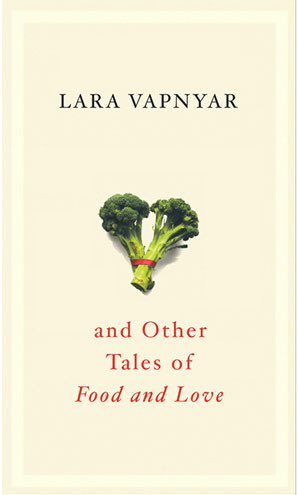


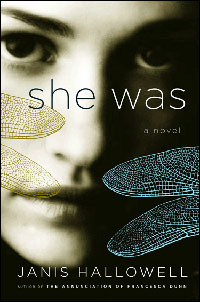

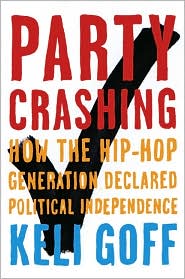

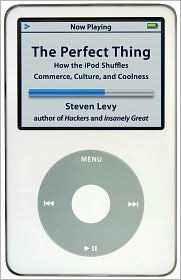



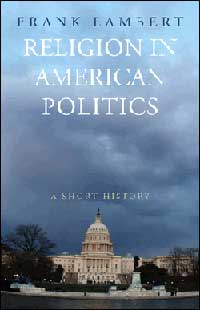

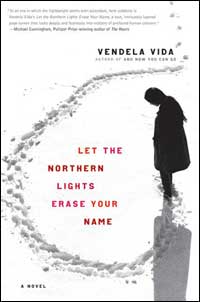

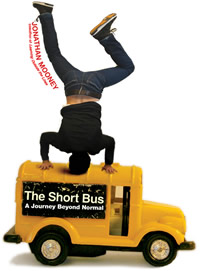
 Jonathan Mooney chronicles his road trip in his book The Short Bus: A Journey Beyond Normal.
Jonathan Mooney chronicles his road trip in his book The Short Bus: A Journey Beyond Normal. 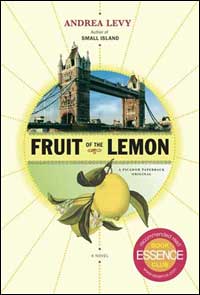
 A young woman makes the most of her confusion in Andrea Levy’s Fruit of the Lemon.
A young woman makes the most of her confusion in Andrea Levy’s Fruit of the Lemon.